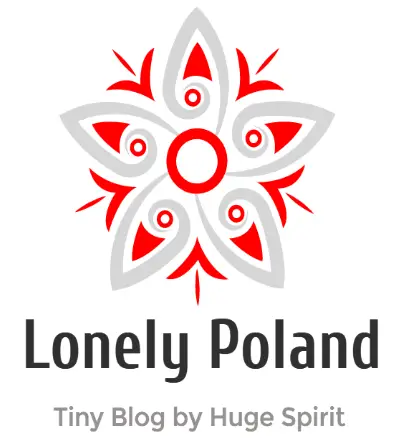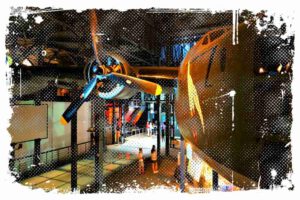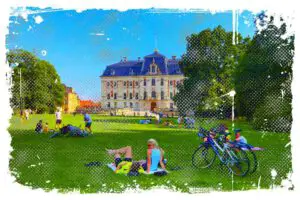In 2013, 16 Orthodox churches were inscribed on the prestigious UNESCO list. Split evenly between Poland and Ukraine, these magnificent structures are located in towns such as Radruż, Chotyniec, Smolnik, Turzańsk in Subcarpathia, and Powroznik, Owczary, Kwiatoń, and Brunary Wyżne in Małopolska.

As you explore these churches, you’ll find that they consist of 5 Lemko Orthodox churches, 2 Halic Orthodox churches, and 1 Boyko Orthodox church. Each of these churches was built between the 16th and 19th centuries and is unique in its own way. What they all have in common is the log construction, which was the characteristic style of the time, and the symbolic references to the cosmogony that are characteristic of the community.
For centuries, these churches have served as places of worship for both Orthodox and Greek Catholics, and their builders incorporated elements of local architecture into the design. Despite their similarities, each church is a unique masterpiece.
Please also read about the other wooden churches in Poland: Beauty of Southern Małopolska Wooden Churches – A UNESCO Site
↳ PRO TIP: Do you like traveling? Then before you buy any ticket or book an attraction, check if it's available in this worldwide Viator Database. You may save a lot of money and time. No need to thank me :)
This church is considered to be one of the oldest wooden Orthodox churches in Poland. It was built in the 16th century by Jan Plaza, who was probably a member of the Sejm and a starosta of Lubaczow. The church was built of fir and oak wood in the Gothic style, with a gabled roof, shingled walls, and low arcades known as sobotas.
During the Tartar invasions, the inhabitants of the area sought refuge in the church, which was surrounded by a wall for defensive purposes.
Another must-see is the Orthodox Church of the Nativity of the Holy Mother of God in Chotyń. It was built in 1615 for the Greek Catholic worshippers. You will be amazed by the stunning 18th-century polychrome painting inside, depicting scenes such as the Last Judgement, and an iconostasis from 1671 with a miraculous icon of the Virgin Mary.
Carpathian Wooden Orthodox Churches in Poland and Ukraine – Highlights
The Carpathian region boasts a variety of wooden Orthodox churches, each representing a different architectural style. Some of the styles you’ll come across include Hutsul, Halic, Boyko, and Lemko.
Here are some of the wooden Orthodox churches you’ll have a chance to see:.
- St. Paraskeva Orthodox Church in Radruż
- Orthodox Church of the Nativity of the Holy Mother of God in Chotyniec
- The Orthodox Church of St. Michael the Archangel in Smolnik
- The Orthodox Church of St. Michael the Archangel in Rzepedź
- The Orthodox Church of St. Jacob in Powroznik
- The Orthodox Church of the Protection of the Holy Mary in Owczary
- The Orthodox Church of St. Paraskevi in Kwiaton
- Orthodox Church of St. Michael the Archangel in Brunary
There are also many other interesting places in Poland you can visit. Please check if they are nearby your travel destination: Exploring Poland’s Cultural Riches: A Guide to UNESCO Cities
Orthodox Church of St. Paraskeva in Radruż
As you walk up to the Orthodox Church of St. Paraskeva in Radruż, you can feel its ancient presence as soon as you step into the lush green surroundings. Surrounded by a towering sandstone wall and nestled in the heart of a small hill, the church is an imposing sight. But what really sets this temple apart is the row of 20 old linden trees that stand guard, creating a canopy of shade and filling the air with their sweet scent.
As you step inside, you’re transported back in time. This temple is one of the oldest Orthodox churches in Poland, with a rich history that spans 450 years. The interior is a stunning blend of old-world charm and contemporary elegance, with stunning polychromes and an iconostasis created by local artists.
The church is not only a place of worship. It is also a refuge. During the time of the Tatar invasions, the inhabitants of the area flocked to the church in search of safety. The walls of the church, which were built to protect its inhabitants, testify to the defensive nature of the church. After World War II, the church fell into disrepair, but was restored in the 1960s and turned into a museum object, preserving its rich history for future generations.
The Orthodox Church of St. Paraskevi in Radruż is open to the public every day. Tours are available, and the church is open from 10:00 a.m. to 6:00 p.m. during the summer season. There is also a free parking lot for cars in the vicinity of the church.
- Pictures and Google Maps Location: Here
Orthodox Church of the Nativity of the Holy Mother of God in Chotyniec
When you enter the Orthodox Church of the Nativity of the Holy Mother of God in Chotyniec, one of the oldest and most beautiful churches in Poland, you are immediately struck by its history. The church was built in 1600 and has been standing for over 400 years. Its architectural features tell the story of its rich past.
As you look around, you’ll notice the classic three parts of an Orthodox church – the babiniec, the nave, and the presbytery – forming a harmonious whole. The temple is adorned with domed roofs supported by 8 side drums, a common feature of Orthodox architecture. But what makes this church unique is the unique and unprecedented external gallery above the babiniec. This remnant of a second chapel on the first floor is a fascinating piece of the church’s history that you won’t find anywhere else.
I am not sure if you have heard the legend about the Orthodox Church in Chotyniec – that it was built a few kilometers away before being mysteriously drawn to its present location. It’s said that the Mother of God herself pointed to this place. Today, the church stands on a small hill in the village of Chotyniec, just 8 kilometers from the Ukrainian border.
As you approach the church, you’ll notice that it’s surrounded by a small wall, it sits in the cool shade of mighty oaks and fragrant lindens. You can park your car near the cemetery.
On the way to the Orthodox Church in Chotyniec, you are surrounded by open spaces that allow you to get a close view of the beautiful structure. Right next to the church is a wooden bell tower that once belonged to the village of Torki.
While exploring the unique features of the Orthodox Church, you’ll notice the gallery above your head. This is truly a sight to behold. It’s amazing to learn that this small temple once had two levels. This adds to its charm and character.
- Pictures and Google Maps Location: Here
St. Michael the Archangel Church in Smolnik
You will come across a historic building with a rich history while walking through the Bieszczady Mountains. The Church of St. Michael the Archangel was built in 1791 and has undergone several changes over the years, from being Orthodox to Greek Catholic and now to Roman Catholic. This church, which still stands today, is a reminder of the once thriving Boyko community in the Bieszczady valleys.
Despite its age, the church has survived the many challenges of time. In fact, it is the fourth temple built in the village of Smolnik after the previous ones were destroyed by fires and floods. After the end of World War II, Smolnik found itself within the borders of the USSR. However, after the political changes in 1951, the Bieszczady Mountains became part of Poland again, resulting in the expulsion of the local population to Ukraine and the arrival of new settlers.
Sadly, the once thriving Orthodox church was neglected and forgotten, and its interior slowly deteriorated. For a time, it was even used as a hay warehouse by the local state farm.
In 1969, the Smolnik Orthodox Church was officially recognized as a historical monument and underwent much-needed repairs. However, it still remained without a proper parish to call it home. It was not until 1974 that the villagers of Smolnik, Dwerniczek, Procisne and Zurawiny began to gather there again, when the church was reconsecrated as the Roman Catholic Church of the Lutowiska Parish.
Although much of the original interior, including the icon paintings and iconostasis, has disappeared, some historical icons can still be found in the Lviv Museum and in Lancut. Fragments of the original polychromy and some original deer antler candlesticks remain well preserved. The current furnishings and icons in the church are contemporary replicas of the original Smolnik Orthodox Church.
You will notice that the gates of the Church of the Assumption of the Virgin Mary in Smolnik are open for you to explore as you approach. However, the interior of the church is only accessible during certain hours. If you would like to take a look inside the church, be sure to plan your visit accordingly. The church is open to the public on Sundays, when Mass is celebrated at 9:30 am. During the summer months, from July to September, the church is also open on Saturdays at 6 p.m. For the rest of the year, you’ll need to make an appointment with the Lutowiska parish.
- Pictures and Google Maps Location: Here
Orthodox Church of St. Michael the Archangel in Rzepedź
The history of the Orthodox Church in Rzepedź dates back to 1526. This is when it was mentioned for the first time. Fast forward to the 19th century and the church that stands there today was built between 1801 and 1803 as a Greek Catholic church. It is a wooden, tripartite temple, classified as a Lemko Orthodox church. It has a northeastern architectural style and a towerless design, made of vertically planked wood.
The interior of the church is of equal size, with a three-sided, closed chancel and two sacristies – one to the north and one to the south. The south sacristy was added later in 1836 and served as a candle store, while a post-and-beam vestibule was added to the west side, with a date inscribed on one of its beams.
After 1947 the church was taken over by the Roman Catholic parish, but on August 10, 1961 it was closed during the „Orthodox Church Campaign” and sealed by the Rzeszów Province. In 1963 the church was returned to the Orthodox community, and since then it has served as a branch church of the Orthodox Community of the Protection of the Mother of God in Komanka.
In 1890, 617 people adhered to the Orthodox faith, and this number rose to 887 in 1918 and 796 in 1938. To the west of the church there is a three-storey wooden bell tower with a spherical dome. There are about a dozen tombstones in the church cemetery, two of which date from the late 19th century.
The area is surrounded by a stone wall, and to the south, a cross was erected in 1988 to commemorate the 1000th anniversary of the baptism of Rus, while another cross was erected in 1938 to commemorate the 950th anniversary of the baptism of Rus.
- Pictures and Google Maps Location: Here
St. Jacob’s Church in Powroznik
After the floods of 1813-14, the Orthodox Church was rebuilt, shifting its original shape and moving it further away from the river. This resulted in where it stands today. Consisting of a sanctuary, an adjoining sacristy, a nave, and a babynca topped by a tall tower, has a triple-pitched roof on the sanctuary and a broken-arched tent roof with a spherical dome and a visible lantern on the nave. In a similar way, the roof of the tower is also equipped with a cupola and a visible lantern. The walls and roofs of the church have shingle cladding.
The interior of the church contains several pieces of 18th century decoration, such as the ornate iconostasis, which was divided into two parts. The upper part remains in its original place at the intersection of the nave and the sanctuary, while the icons in the lower part were moved and placed under the walls of the sanctuary. In addition, there is a Baroque side altar from the 18th century with the image of Christ at the post and several valuable icons. In the sacristy (formerly the presbytery), there is an especially valuable polychrome painting from 1607. It has been preserved intact. This former Orthodox church is now a Roman Catholic church.
- Pictures and Google Maps Location: Here
Orthodox Church of the Protection of the Mother of God in Owczary
This attractive temple was built in 1653 as the second church in the village. It’s worth noting that until 1949 Owczary was known as Rychwałd, which is a Polish version of the German term Reich Wald, meaning „rich forest”. The village has existed since the 14th century.
Before the war Rychwałd had more than 900 inhabitants. It was one of the larger Lemko settlements in the region. When Operation Vistula took place, the church was given to the Catholics and became an annex of the parish in Sekowa. In the 1950s, Greek Catholic masses were regularly held in the temple as some of the displaced people began to return to the area. Masses have been held there on a regular basis since 1988.
The church is known for its distinctive shape, which is the result of various adaptations of the original layout and the removal of the tripartite division. The sanctuary is the smallest room, contrasting with the expansive nave. On the outside, its walls are clad with shingles and boarded at the bottom.
When you enter the church, the stone floor decorated with tiles is the first thing that catches your eye. The colorful decoration is very striking. It was created in 1938 in honor of the 950th anniversary of the conversion of the Rus. It’s worth taking a look at the roof, where there is a dove, which is the symbol of the Holy Spirit, and four cherubim. There’s also an oculus that lets in daylight from above.
- Pictures and Google Maps Location: Here
St. Paraskeva Orthodox Church in Kwiaton
Beskid Niski has a special place in our hearts. Every time we visit it, it’s even more magical. The villages that were once full of life are now almost empty. During my stay in Lemkivshchyna, we may stumble upon the stunning wooden Orthodox churches that somehow managed to survive the destruction of the war. Most of the cerkva were taken over by Catholics and became their church. The unique Orthodox church in Kwiaton is no different. Originally a Greek Catholic temple dedicated to St. Paraskeva, it is now an auxiliary church of the Roman Catholic parish in Uscie Gorlickie. You shouldn’t miss the opportunity to admire the fascinating details of this church – it would be a sin.
It is easy to find Kwiaton. It is a small village located between Uscie Gorlickie and Wysowa. Only a few meters away from the main road is the Zdynia River, where an Orthodox church stands out with its tall towers. The old trees around the church try to hide it from the summer heat. Remarkably, the wooden structure has been there for over two and a half centuries and still looks amazing.
The Greek Catholic church was abandoned in 1933 when the entire village adopted the Orthodox faith. After World War II, only two households remained in the village. This put the large wooden Orthodox church in jeopardy. Many Lemko farms, neglected over time, were taken over by nature, but fortunately this particular church was not.
When we first approach the Orthodox Church of Kwiaton, we can observe its many peculiarities. The whole area of the church is surrounded by a wooden palisade. In order to enter the church, we can only pass through two doors, which have unique onion-shaped roofs covered with shingles. The church is made up of three separate sections that form quadrangles of different heights. The choir is the lowest part, the nave is the middle part, and the highest part with a high tower is the babiniec. Each part of the church has a refined roof with balustrade helmets on the tower and ornamental crosses, each of which is different.
We can visit the church from Wednesday to Sunday (it is closed on Monday and Tuesday). The idea is to motivate people to explore the wonders of Malopolska by offering free admission to the Orthodox Church. And, of course, many are eager to do so.
- Pictures and Google Maps Location: Here
St. Michael the Archangel Church in Brunary
Situated in the valley of the Biala river, the 4 km long Brunary is divided into Brunary Wysne and Brunary Nisne. The church stands in the middle of the village, right next to the bridge over the river. This area has been populated since ancient times, a figure from the 3rd-4th century was found and is now housed in the Archaeological Museum in Cracow. King Casimir the Great founded the settlement in 1335.
It is a wooden log church with a mast tower facing west-north.It’s constructed from four components: a new trilaterally closed presbytery, an older one connected to the nave with a single roof, and a tower. The walls are made of vertical planks, and the roofs are covered with shingles and tin.
Please note that the church is open year-round. During the summer months, the church is open to the public on Wednesdays from 9:00 a.m. to 5:00 p.m., Thursdays, Fridays, and Saturdays from 9:00 a.m. to 6:00 p.m., and Sundays and holidays from 12:00 p.m. to 5:00 p.m. Appointments can be made by telephone during the colder months of November, December, January, February, March, and April.
- Pictures and Google Maps Location: Here
Bibliography:
- https://medievalheritage.eu/en/main-page/heritage/poland/radruz-orthodox-church/
- https://en.wikipedia.org/wiki/St._Michael_Archangel%27s_Church,_Brunary
- https://en.wikipedia.org/wiki/St._Paraskevi_Church,_Kwiato%C5%84
- https://en.wikipedia.org/wiki/St._James_Church,_Powro%C5%BAnik
- https://digitalunesco.pl/portfolio-item/chotyniec-en/



